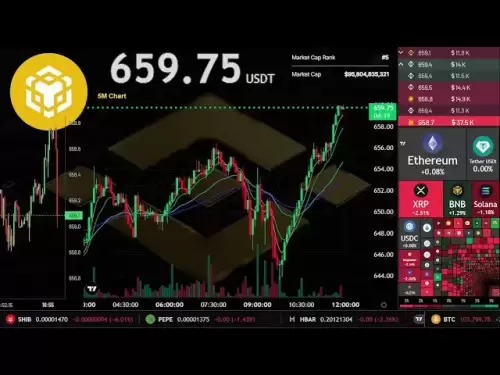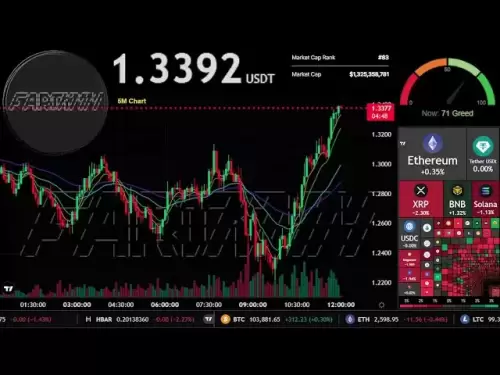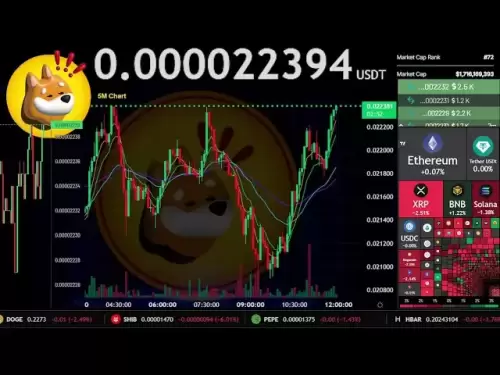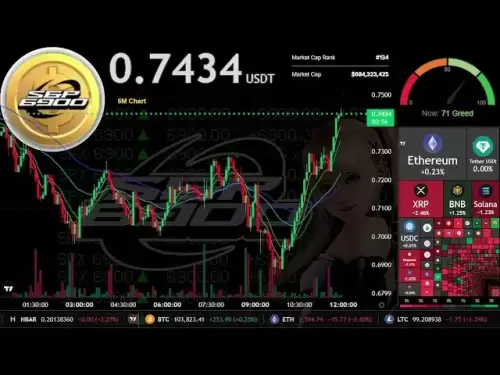 |
|
 |
|
 |
|
 |
|
 |
|
 |
|
 |
|
 |
|
 |
|
 |
|
 |
|
 |
|
 |
|
 |
|
 |
|
Cryptocurrency News Articles
Today's Crypto for Advisor newsletter is coming to you from Consensus Toronto.
May 15, 2025 at 11:14 pm
The energy is high as digital asset policy makers, leaders and influencers gather to talk about bitcoin, blockchain, regulation, AI and so much more!

Today's Crypto for Advisor newsletter is coming to you from Consensus Toronto. The energy is high as digital asset policy makers, leaders and influencers gather to talk about bitcoin, blockchain, regulation, AI and so much more!
Attending Consensus? Visit the CoinDesk booth, #2513. If you are interested in contributing to this newsletter, Kim Klemballa will be at the booth today, May 15, from 3-5 pm EST. You can also reply to this email directly.
In today's Crypto for Advisors, Harvey Li from Tokenization Insights looks at stablecoins, where they came from and their growth.
Then, Trevor Koverko from Sapien answers questions about the status of stablecoin regulations and adoption and new regulations in Europe in Ask an Expert.
Thank you to our sponsor of this week's newsletter, Grayscale. For financial advisors near Chicago, Grayscale is hosting an exclusive event, Crypto Connect, on Thursday, May 22. Learn more.
– Sarah Morton
Stablecoins - Past, Present and Future
When major financial institutions—from Citi and Standard Chartered to Brevan Howard, McKinsey and BCG—rally around a once-niche innovation, it’s a good idea to take note, especially when the innovation is stablecoins, a tokenized representation of money in the on-chain world.
What email was to the internet, stablecoin is to blockchain—instant and cost-effective value transfer at a global scale running 24/7. Stablecoin is blockchain’s first killer use case.
A Brief History
First introduced by Tether in 2015 and hailed as the first stablecoin, USDT offered early crypto users a way to hold and transfer a stable, dollar-denominated value on-chain. Until then, their only alternative was bitcoin.
Tether’s dollar-backed stablecoin made its debut on Bitfinex before rapidly spreading to major exchanges like Binance and OKX. It quickly became the default trading pair across the digital asset ecosystem.
As adoption grew, so did its utility. No longer just a trading instrument, stablecoin emerged as the primary cash-equivalent for trading, cash management and payments.
Below is the trajectory of stablecoin’s market size since inception, a reflection of its evolution from a crypto niche to a core pillar of digital finance.
Usage at Scale
The reason stablecoins have been a hot topic in finance is their rapid adoption and growth. According to Visa, stablecoin on-chain transaction volume exceeded $5.5 trillion in 2024. By comparison, Visa’s volume was $13.2 trillion while Mastercard transacted $9.7 trillion during the same period.
Why such proliferation? Because stable dollar-denominated cash is the lifeline for the entire digital assets ecosystem. Here are 3 major use cases for stablecoin.
Major Use Cases
1. Digital Assets Trading
Given its origins, it’s no surprise that trading was stablecoin’s first major use case. What began as a niche tool for value preservation in 2015 is now the beating heart of digital asset trading. Today, stablecoins underpin over $30 trillion in annual trading volume across centralized exchanges, powering the vast majority of spot and derivatives activity.
But stablecoin’s impact doesn’t end with centralized exchanges—It is also the liquidity backbone of decentralized finance (DeFi). Onchain traders need the same reliable cash equivalent for moving in and out of positions. A glance at leading decentralized platforms, such as Uniswap, PancakeSwap and Hyperliquid, shows that top trading pairs are consistently denominated by stablecoins.
Monthly decentralized exchange volumes routinely hit $100-200 billion, according to The Block, further cementing stablecoin’s role as the foundational layer of the modern digital assets market.
2. Real World Assets
Real-world assets (RWAs) are tokenized versions of traditional instruments such as bonds and equities. Once a fringe idea, RWAs are now among the fastest-growing asset classes in crypto.
Leading this wave is the tokenized U.S. Treasury market, now boasting over $6 billion AUM. Launched in early 2023, these on-chain Treasuries opened the door for crypto-native capital to access the low-risk, short-duration US T-Bills yield.
The adoption saw a staggering 6,000% growth according to RWA.xyz: from just $100 million in early 2023 to over $6 billion AUM today.
Asset management heavyweights such as BlackRock, Franklin Templeton and Fidelity (pending SEC approval) are all creating on-chain treasury products for digital capital markets.
Unlike traditional Treasuries, these digital versions offer 24/7 instant mint/redemptions, and seamless composability with other DeFi yield opportunities. Investors can subscribe and redeem around the
Disclaimer:info@kdj.com
The information provided is not trading advice. kdj.com does not assume any responsibility for any investments made based on the information provided in this article. Cryptocurrencies are highly volatile and it is highly recommended that you invest with caution after thorough research!
If you believe that the content used on this website infringes your copyright, please contact us immediately (info@kdj.com) and we will delete it promptly.
-

-

-

- The latest Solana price predictions suggest that SOL seems to be gearing up for a bold push toward $500
- May 16, 2025 at 04:45 am
- This piece does not constitute financial advice. All cryptocurrencies are volatile and thus risky. Always conduct extensive research before engaging with any crypto asset.
-

-

- JPMorgan Sets the Stage for TradFi-DeFi Merger by Settling Its First Tokenized Transaction on a Public Blockchain
- May 16, 2025 at 04:40 am
- The merger between traditional finance (TradFi) and decentralized finance (DeFi) is becoming tangible, step by step. For years, this marriage seemed like a distant promise.
-

-

-

-




























































